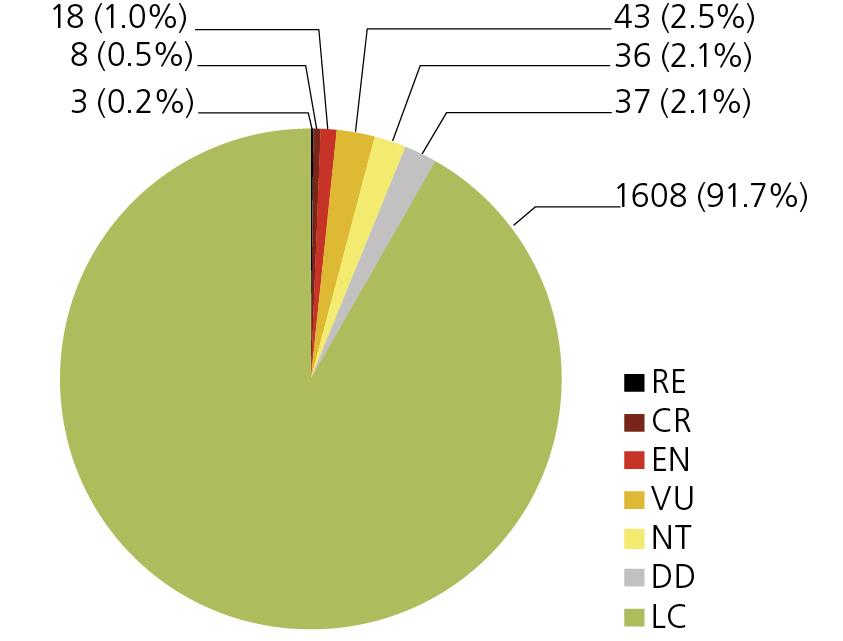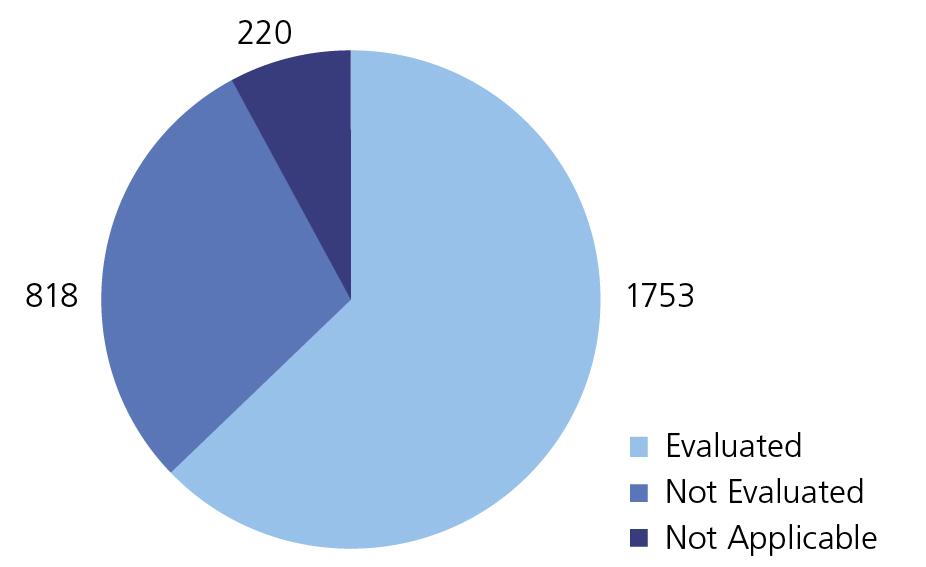Red List of Species
The HELCOM Red List of Baltic Sea species in danger of becoming extinct (2013) is the first threat assessment for Baltic Sea species that covers all marine mammals, fish, birds, macrophytes (aquatic plants), and benthic invertebrates, and follows the Red List criteria of the International Union for Conservation of Nature (IUCN).
Almost 2800 species or subspecific assessment units were considered in the Red List assessment and about 1750 were evaluated according to the IUCN Red List criteria. In all, 4% of those were regarded threatened (VU, EN, CR), which means that they are in danger of becoming extinct in the Baltic Sea.

Three species were found to be already regionally extinct in the HELCOM area: two fish, American Atlantic sturgeon (Acipenser oxyrinchus) and the common skate (Dipturus batis), and one bird, the gull-billed tern (Gelochelidon nilotica).
In all eight taxa, all vertebrates, were categorised as Critically Endangered (CR). The overall numbers of taxa in the categories Endangered (EN) and Vulnerable (VU) were 18 and 43, respectively. Additionally, 36 taxa were assessed Near Threatened (NT) and 37 as Data Deficient (DD). The overall proportion of red-listed taxa was 8.3%.

Within the groups of macrophytes and benthic invertebrates, the Red Lists mainly include species that are rare and have further declined; in many cases, the rarity in the HELCOM area is related to their salinity requirements (either high or low). Many of the red-listed species are characteristic components of shallow, sheltered bays, lagoons or inlets. Eutrophication effects are more pronounced in such habitats due to reduced water exchange, and the same areas are also hot spots for tourism, exposed to several construction activities and commercial use, such as aquaculture.
With regard to vertebrates, the Red Lists do not have such a strong inclination towards geographically restricted populations or towards certain regions. The red-listed fish, birds, and mammals include taxa from different regions rather evenly and also widely distributed taxa that have experienced dramatic overall declines.
